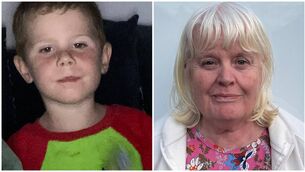Over 70 gang inmates due for release in next three years

Justice Minister Helen McEntee said the emergence in recent years of criminal groupings has had significant implications for the management of Irish prisons. Picture:Gareth Chaney/Collins
Almost half of the 166 crime gang members currently behind bars are due for release in the next three years.
The 166 prisoners are from 14 different crime gangs according to new figures provided by Justice Minister Helen McEntee.
She said there are 71 prisoners associated with known criminal gangs who are due for release in the next three years.
A sizeable proportion of the gang members behind bars are from the Kinahan gang and the 166 crime gang prisoners include a nine-man Kinahan cartel hit team that has been jailed for a total of 80 years for a bid to murder Patsy Hutch.
Last Summer, Assistant Garda Commissioner John O’Driscoll stated after the jailing of Kinahan crime gang members, that gardaí will not cease until the gang has been dismantled.
In her written response to TD Bernard Durcan, Ms McEntee said: “The emergence in recent years of criminal groupings has had significant implications for the management of Irish prisons. Rivalries and feuds which develop on the outside continue inside the prison.
Ms McEntee said the 166 prisoners from 14 criminal groupings exclude the subversive groupings in Portlaoise Prison.
She said the situation at Portlaoise “is subject to continuous monitoring and assessment”.
The minister said, “membership or allegiance of these criminal groups fluctuates on a continuous basis with some persons breaking links and others becoming affiliated on a daily basis”.
“It is also the case that prisoners will not always declare their affiliation to certain groupings and it is therefore not possible to provide definitive numbers in relation to the number of known members of criminal groupings currently in custody."
In a further complication concerning the figures, Ms McEntee said more than one criminal gang may group together under the umbrella of a particular group and, in some instances, some gangs may form splinter groups due to family or in-house disputes.
"The Irish Prison Service is committed to preventing identified members of criminal groups from conducting criminal activities while in custody and also to prevent them from exerting inappropriate influence over other persons," she added.
"For example, certain security initiatives have made it more difficult for prisoners to engage in illegal activities while in prison."
The minister said these initiatives include the installation of airport-style security including scanners and X-ray machines, as well as the gathering and collating of intelligence information on members of criminal groups in custody, carrying out intelligence-led searches, and preventing the flow of contraband, including mobile phones, into prisons.
“In addition, there is regular contact between the Irish Prison Service and An Garda Síochána to discuss security issues including the operation of criminal groupings.”













